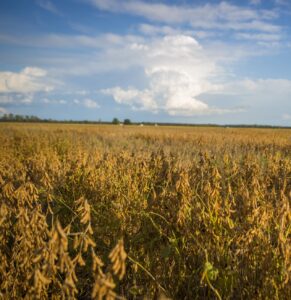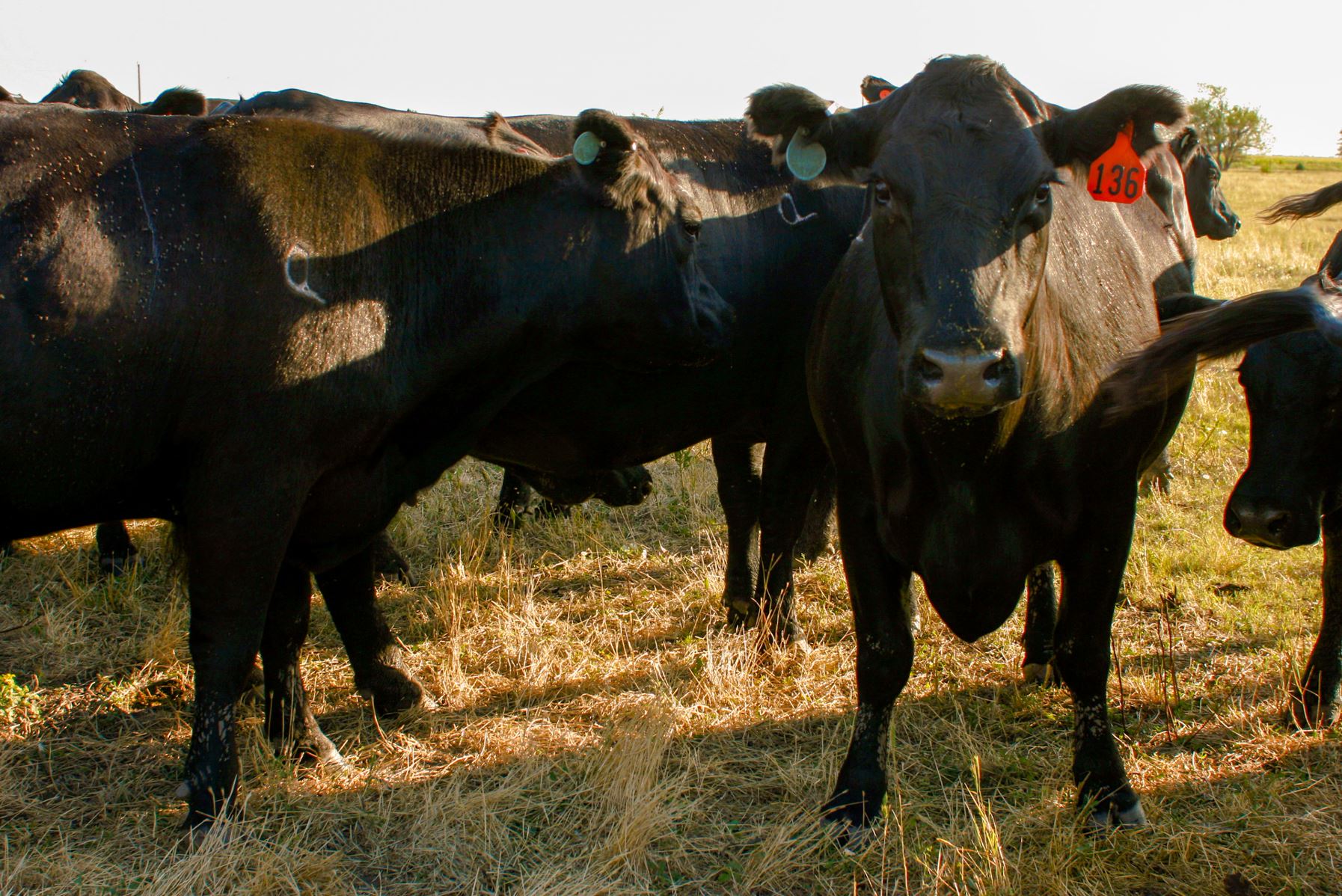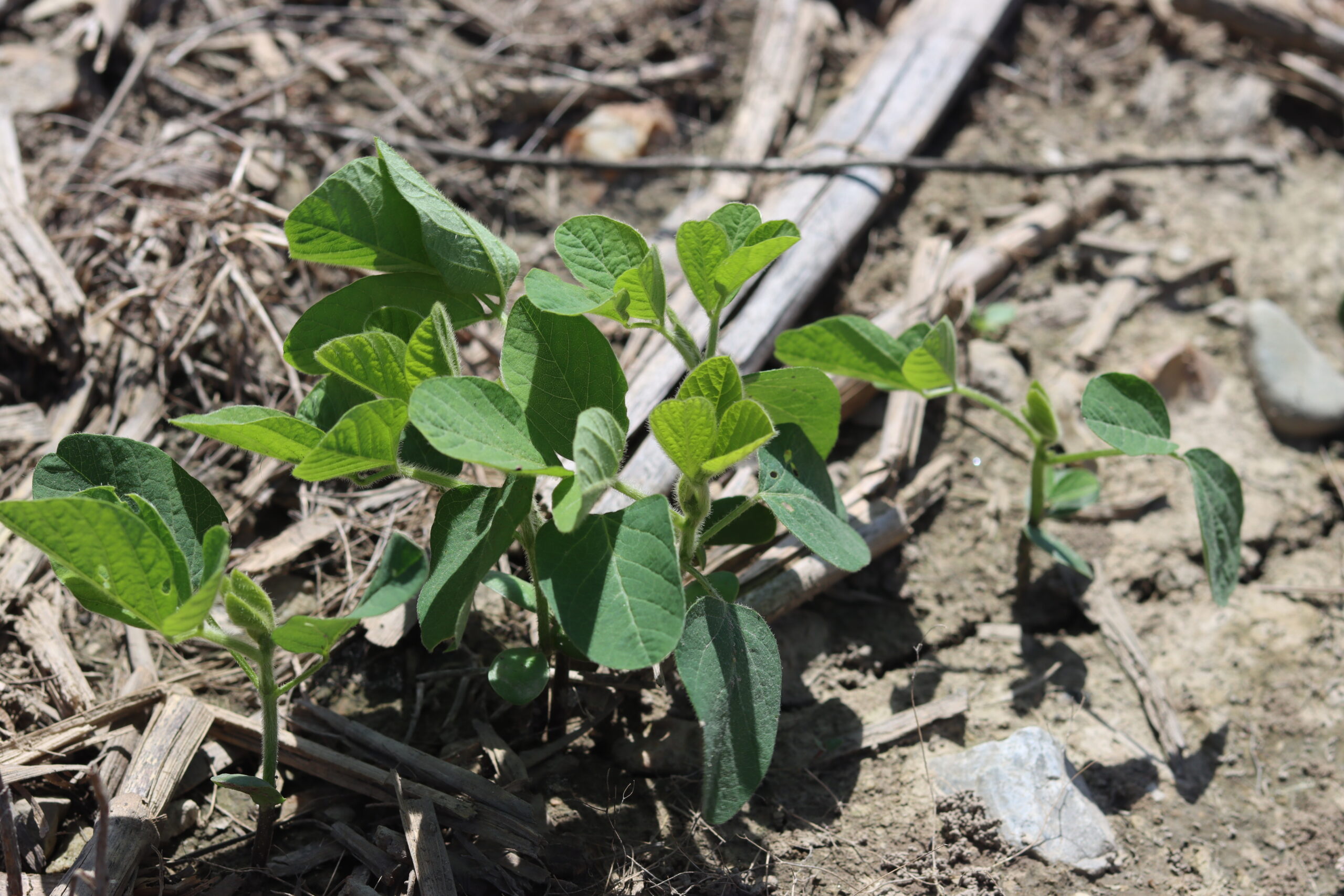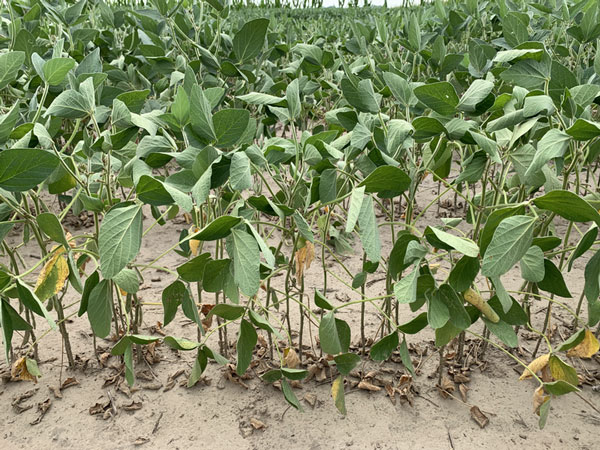Cattle production is one of the most important agricultural industries in the United States. Cattle nutrition is integral to consumers and producers alike. What farmers feed their cattle matters and often determines the marketability of livestock. Proper nutrition allows the animal to grow, reproduce and have a strong immune system to fight off infections. When thinking ab

out nutritious options to feed your herd, soybeans may not be the first thing that comes to mind.
Research done by the soybean checkoff found that U.S. beef operations use more than 1.3 million tons of soybean meal every year. Soybean meal is the primary source of protein and amino acids (AA) in feed formulations for livestock worldwide. Ruminants require nutrients like amino acids because they assist with tissue growth and repair, enzyme activity, transport of molecules, genetic storage, immune function and cell differentiation.
“The high oil content in soybean meal has boosted milk production and made hair coats slicker in my cattle,” said Terry Schwoeppe, Missouri Soybean Association (MSA) board member and farmer from Washington, Missouri.
There are several options for feeding cattle soybeans allowing room for farmers to choose the option they feel fits their herd.
“The cows that are nursing and have young calves get a ration of corn, distilled grain and soybeans,” said Schwoeppe. “The soybeans are ground up, I never feed them whole.”
If you choose to feed soybeans raw, they should only be fed as 10% of their diet 1.5 Ibs. /day for 600 Ib growing cattle and 3 Ibs. /day for bred cattle. The protein in raw soybeans appears to be utilized as efficiently as the protein in solvent soybean meal. Whole soybeans allow producers an opportunity to lower their feed costs and improve probability granted they have the proper equipment and facilities to feed beans to the cattle.
Fine grinding makes the soybeans easier to consume but in turn, decreases shelf life due to the fat inside becoming exposed to elements causing it to go rancid. Letting the cattle graze soybean stubble containing whole beans could result in overconsumption and is not recommended. The recommended production process is to crush the beans and proceed to cook them at approximately 60 degrees Celsius. Producers should squeeze the beans, remove any excess liquids, then toast and cool them. For the best results, limit whole soybeans to only 15% of the total ration dry matter. Too high of rations may cause scouring, acidosis, decreased performance, or cause cattle to go on and off feed.
When introducing cattle to soybeans for the first time do so slowly and gradually.
“When I first started feeding soybeans I talked with fellow farmers and farm organization members to see what they have done in the past,” said Schwoeppe. “I was always watching my animals and paying close attention to their digestive systems and how they’re working.”
Soybeans can be very successful in beef cattle feeding programs if they are managed properly. Paying close attention to rations and the reaction cattle are having to soybeans is crucial.
“I tweak my rations all the time depending on how the cattle are reacting to the situation they’re in,” said Schwoeppe. “If protein in our hay goes up or the cattle are gaining weight or I see noticeable changes in the manure, I will back off, so they don’t get too much protein from the soybeans.”
All farmers strive to have happy and healthy cattle. To obtain this goal a lot of times it starts with the cattle’s nutrition. A healthy cow is a happy cow so ensuring farmers have the best feeding and management programs can help further the success of their cattle. So, the next time your cattle asks you what’s for dinner, soybeans just might be on the menu.


